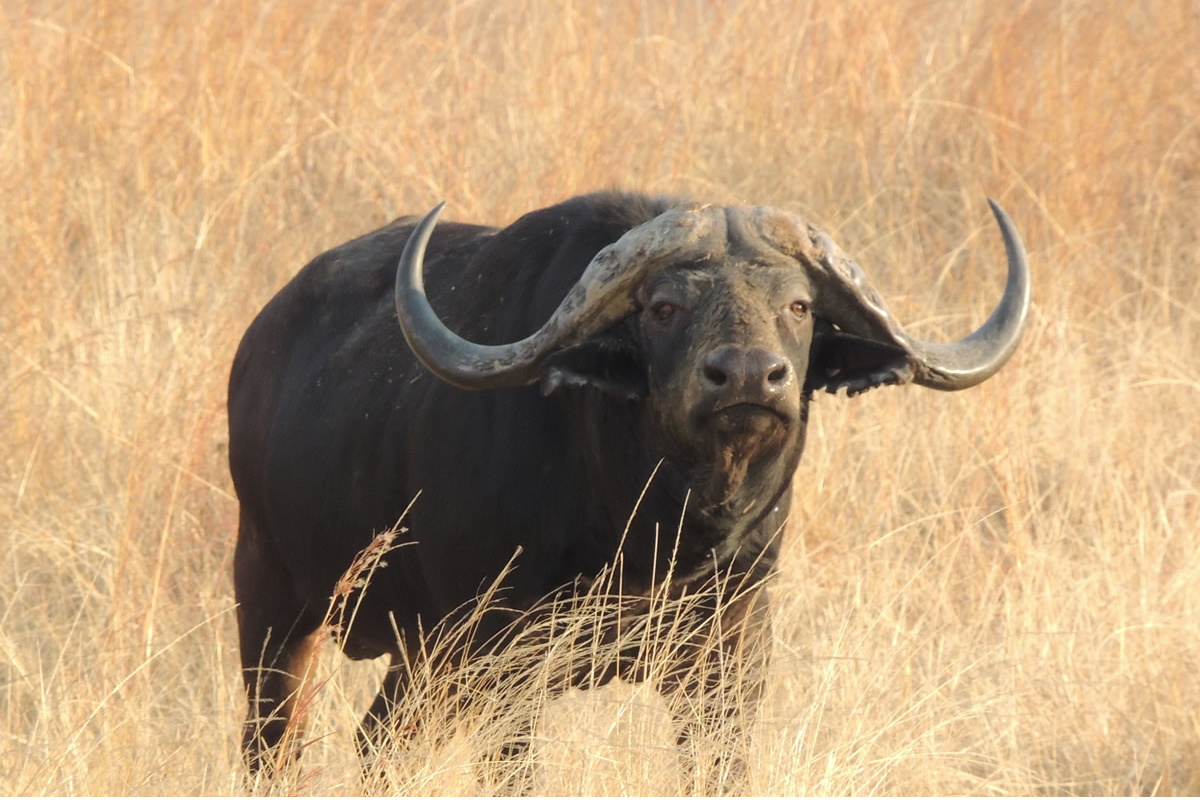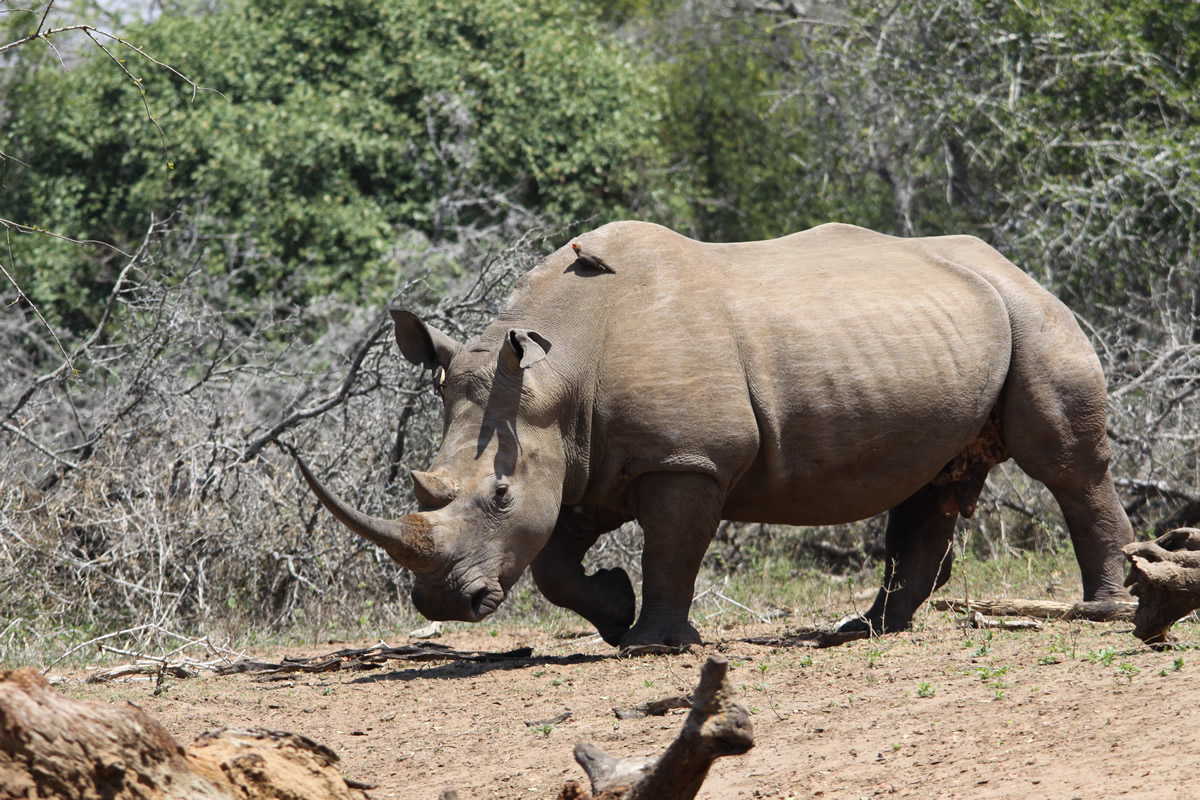The African “Big 5”
In Africa, the big five game animals are the African lion, African elephant, Cape Buffalo, African leopard, and White Rhino. The members of the Big Five were chosen for the difficulty in hunting them and the degree of danger involved, rather than their size. This element of danger makes them amongst the most popular species for big game hunters.
A “Big 5” safari is the pinnacle of excitement
The Cape Buffalo
Buffalo prefer habitats with dense cover such as reeds and thickets. Herds have also been found in open woodland and grassland. While not particularly demanding with regards to habitat, they require water daily and therefore depend on perennial sources of water.
As most hunters know, the Cape buffalo is one of Africa’s most sought-after animals. We are lucky to have some great areas to hunt buffalo in South Africa such as the Timbavati National Park, bordering the fenceless Kruger National Park, allowing all animals to travel freely between the two areas. A certain number of buffalo are put on tender every year and we bid according to our client’s wishes. The quality of the hunt and trophy is outstanding and well worth the higher price tag it attracts. Getting a Buffalo in this area of 43”-44” is not uncommon. We also hunt Botswana and Tanzania (Sean is fully licensed in Tanzania) and there is a great abundance of really big buffalo.

The African Elephant
The African elephant is the world’s largest land mammal and can stand more than 11 feet and weigh in excess of seven tons. The elephants dark grey skin provides excellent camouflage in the dense brush of the bush and he can move through the bush with amazing speed and stealth for his size. The elephants eyesight is relatively poor, but his hearing is very good and his sense of smell is superior.
Elephant hunting is not easy. Elephant hunts requires expert tracking and you should be prepared to walk great distances, for days on end, to secure a good tusker.


The African Lion
At Garry Kelly Safaris, we have some great areas in which to hunt wild, managed lions in South Africa. The hunt is done in the traditional walk and stalk method, picking up tracks and following them. This is normally a 16-21 day safari. There are not many of these wild, managed lions permits available in South Africa. If you are interested in one of these lion hunts, please let us know as soon as possible so we can apply for the necessary permits. Garry Kelly Safaris is totally opposed to any form of canned lion hunting. (the practice of raising captive-bred lions and releasing them just prior to a hunt).
Lions vary in color but typically sport light yellow-brown coats. Mature male lions are unique among big cats due to the thick brown or black manes that encircle their necks. Lions consume a wide variety of prey, from wildebeest, impala, zebra, giraffe, buffalo and wild hogs to even rhinos and hippos. They will also feed on smaller animals such as hares, birds and reptiles. Lions are also known to attack elephants when food is scarce.

The Rhino
Our South Africa Concessions offer incredible opportunity and terrain to harvest a magnificent wild Rhino. Rhino hunts in this area require tracking, patience and the ability to walk for long periods of time. At Garry Kelly Safaris, we only hunt Rhino in areas where it is 100% sustainable and beneficial to the areas conservation and anti-poaching programs. From 437 Rhino in 1953 South Africa now boast the earths largest Rhino population. The current population is in excess of 18,000 animals.
The Leopard
The Leopard is a medium-sized wildcat that is natively found in a variety of different habitats across sub-Saharan Africa. A member of the “Big Cat” family, the Leopard is an agile and opportunistic hunter and spends a great deal of its time high in the tree branches. There are seven different sub-species of Leopard which differ in their appearance and geographic location, with the African Leopard being the most common and widespread.



